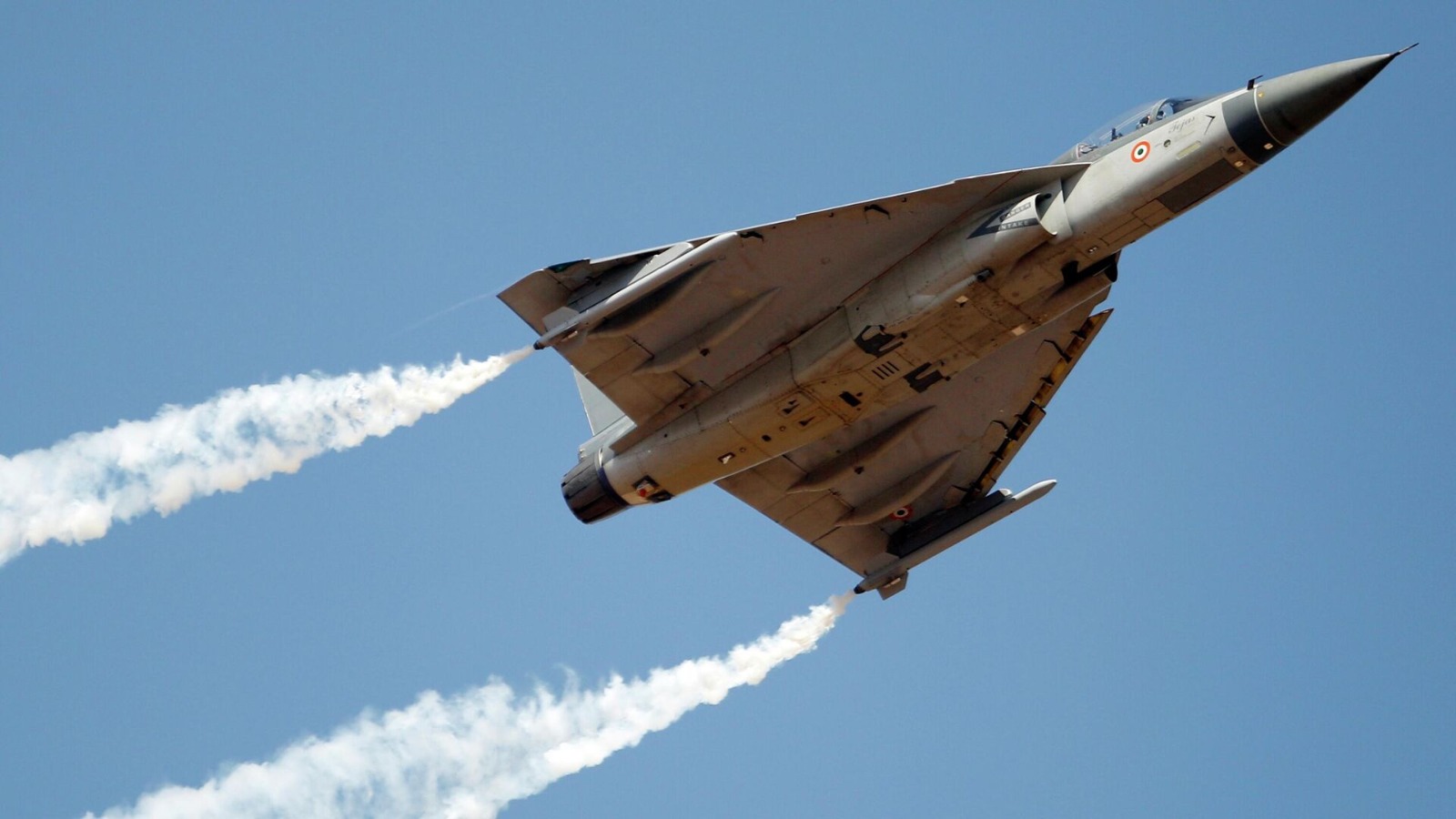The Indian government has made the indigenous Light Combat Aircraft (LCA) ‘Tejas’ the flagship product on its defense exports list. Not a single month passes when the news does not pop up that a new country is interested in the fighter jet that had its inception in 1984. But, the question remains if the Indian aerospace maker has the wherewithal to meet export orders, even if it manages to clinch a deal.
India has been aggressively pushing to sell the LCA to foreign air forces. Indian diplomats, along with the team from the aircraft manufacturers, have been meeting foreign officials, throwing diplomatic weight behind the aircraft.
In November 2023, Prime Minister Narendra Modi flew in the twin-seater Tejas in a show of confidence. What made it an unparalleled feat was that it was the first sortie in any fighter jet by a serving Indian prime minister.
The Indian Air Force inducted its first LCA Tejas in 2016. Currently, it operates two squadrons of LCA. The biggest handicap the Tejas had was that it was not combat-proven and had never faced a challenger, as its Indian peninsular deployment meant it was a peace-time combat jet.
But all that could change if Tejas is permanently deployed in one of India’s forward air bases facing west or north, and it would need to patrol the skies over India’s two volatile borders.
The IAF has already begun sending the existing two LCA squadrons on detachments to forward air bases along the western and northern frontiers, as was witnessed recently with a squadron in Awantipur in Jammu and Kashmir for training.
It has been participating in war games with foreign air forces. The IAF’s then Vice Chief and present Chief Air Chief Marshal AP Singh piloted the aircraft during the recently concluded multi-lateral wargames ‘Tarang Shakti’ and intercepted a German Eurofighter in simulated drills.
In the coming years, IAF will operate the largest fleet of Tejas fighter aircraft. The IAF has placed orders for 83 + 97 LCA Mk1A aircraft, which will receive 40 upgrades in their first iteration.
The only milestone eluding the fighter jet has been an export order. Despite “intense lobbying,” in 2023, Tejas lost to second-hand F-16s in clinching the deal to arm the Argentinian Air Force with fighter jets. A series of media reports have discussed how countries like Congo, Nigeria, the Philippines, Egypt, Malaysia, and Botswana have shown interest in procuring the LCA.
Malaysia opted for the South Korean F-50 Golden Eagle fighter over LCA Tejas.
But the question remains – if the HAL gets an export order today, can it execute the deal, or is the LCA export quest a chimera?
What complicates the matter further is that the HAL was scheduled to deliver its first LCA Mk1A fighter jet to the IAF in February 2024. However, a delay in the supply of engines powering these fighter jets from the American firm GE Aerospace has derailed the delivery schedule.

HAL’s Aircraft Manufacturing Capacity
While the HAL has the capability to develop a functional fourth-generation fighter jet, its manufacturing capacity is much below the requirement. The new IAF Chief talked about this in his first media interaction.
Air Chief Marshal Singh said that the delivery of LCA MK1 started in July 2016, when he was posted at the ASTE (Aircrafts and Systems Testing Establishment). Since then, the IAF has only 38 of these aircraft on its strength.
A former senior IAF official told the EurAsian Times on condition of anonymity: “LCA program is evolving and maturing. The HAL, as a manufacturer, is fully aware of what it takes to manufacture these aircraft. They have the capability. It is the capacity that needs to be enhanced.”
When asked if HAL can export these LCA aircraft as of today, the veteran added: “Maybe if a lot of ifs are addressed.”
HAL currently can build 8 LCA aircraft per year. This will be augmented to 16 aircraft every year by 2025 and 24 aircraft every year in the next three years.
Outlining the capacity augmentation roadmap that the HAL is following, the former Chief Managing Director (CMD) of the HAL was quoted saying that the HAL has increased its production capacity from eight to 16 aircraft annually at its Bangalore facility. The company is also tying up with private players to supply aircraft structures, especially for all four structures—rear, front, center fuselage, and wings—to further strengthen the supply chain.
The HAL is also starting a third line in Nasik, which is expected to be operational by the end of 2024. The Nasik facility is designed to manufacture eight aircraft and will become fully operational from 2024 to 25.
The HAL has been aiming to manufacture 16 aircraft in 2025; however, the engine delays have pushed up the delivery schedule. The HAL has been aiming to deliver 83 LCAs one year before the contracted delivery schedule of 2028-29. This would have been followed by the delivery of 97 LCA MK1A for the IAF.
Considering the IAF’s fighter jet squadrons are down to the 1965 level, these indigenous fighter jets are critical for the IAF to maintain deterrence against the Chinese Air Force.
This again raises the question of whether the HAL can meet both the IAF’s and export demands if the need arises. Coupled with the manufacturing capacity, the dependence on foreign vendors for critical components like engines is detrimental to India’s ambitions to export fighter jets.




